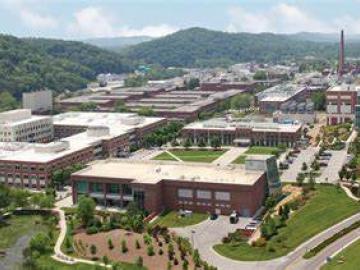Filter News
Area of Research
- Advanced Manufacturing (14)
- Biology and Environment (26)
- Building Technologies (1)
- Clean Energy (79)
- Computational Engineering (2)
- Computer Science (7)
- Electricity and Smart Grid (2)
- Fusion and Fission (5)
- Fusion Energy (6)
- Materials (16)
- Materials for Computing (2)
- Mathematics (1)
- National Security (16)
- Neutron Science (7)
- Nuclear Science and Technology (9)
- Nuclear Systems Modeling, Simulation and Validation (1)
- Quantum information Science (1)
- Sensors and Controls (1)
- Supercomputing (23)
News Type
News Topics
- (-) 3-D Printing/Advanced Manufacturing (63)
- (-) Advanced Reactors (19)
- (-) Big Data (35)
- (-) Clean Water (26)
- (-) Grid (41)
- (-) Machine Learning (28)
- Artificial Intelligence (51)
- Bioenergy (61)
- Biology (70)
- Biomedical (37)
- Biotechnology (12)
- Buildings (33)
- Chemical Sciences (26)
- Climate Change (63)
- Composites (14)
- Computer Science (115)
- Coronavirus (28)
- Critical Materials (12)
- Cybersecurity (17)
- Decarbonization (46)
- Emergency (2)
- Energy Storage (58)
- Environment (140)
- Exascale Computing (22)
- Fossil Energy (3)
- Frontier (20)
- Fusion (36)
- High-Performance Computing (49)
- Hydropower (11)
- Irradiation (2)
- Isotopes (28)
- ITER (5)
- Materials (71)
- Materials Science (68)
- Mathematics (6)
- Mercury (10)
- Microelectronics (2)
- Microscopy (30)
- Molten Salt (6)
- Nanotechnology (28)
- National Security (33)
- Net Zero (7)
- Neutron Science (70)
- Nuclear Energy (67)
- Partnerships (12)
- Physics (29)
- Polymers (15)
- Quantum Computing (19)
- Quantum Science (34)
- Renewable Energy (1)
- Security (11)
- Simulation (30)
- Software (1)
- Space Exploration (21)
- Statistics (1)
- Summit (35)
- Sustainable Energy (79)
- Transformational Challenge Reactor (3)
- Transportation (60)
Media Contacts

ORNL researchers modeled how hurricane cloud cover would affect solar energy generation as a storm followed 10 possible trajectories over the Caribbean and Southern U.S.

Rishi Pillai and his research team from ORNL will receive a Best Paper award from the American Society of Mechanical Engineers International Gas Turbine Institute in June at the Turbo Expo 2024 in London.

ORNL’s Erin Webb is co-leading a new Circular Bioeconomy Systems Convergent Research Initiative focused on advancing production and use of renewable carbon from Tennessee to meet societal needs.

Scientists at ORNL have developed 3D-printed collimator techniques that can be used to custom design collimators that better filter out noise during different types of neutron scattering experiments
ORNL scientists have determined how to avoid costly and potentially irreparable damage to large metallic parts fabricated through additive manufacturing, also known as 3D printing, that is caused by residual stress in the material.

To capitalize on AI and researcher strengths, scientists developed a human-AI collaboration recommender system for improved experimentation performance.

ORNL climate modeling expertise contributed to a project that assessed global emissions of ammonia from croplands now and in a warmer future, while also identifying solutions tuned to local growing conditions.

Scientists at ORNL are looking for a happy medium to enable the grid of the future, filling a gap between high and low voltages for power electronics technology that underpins the modern U.S. electric grid.

New computational framework speeds discovery of fungal metabolites, key to plant health and used in drug therapies and for other uses.

In summer 2023, ORNL's Prasanna Balaprakash was invited to speak at a roundtable discussion focused on the importance of academic artificial intelligence research and development hosted by the White House Office of Science and Technology Policy and the U.S. National Science Foundation.




